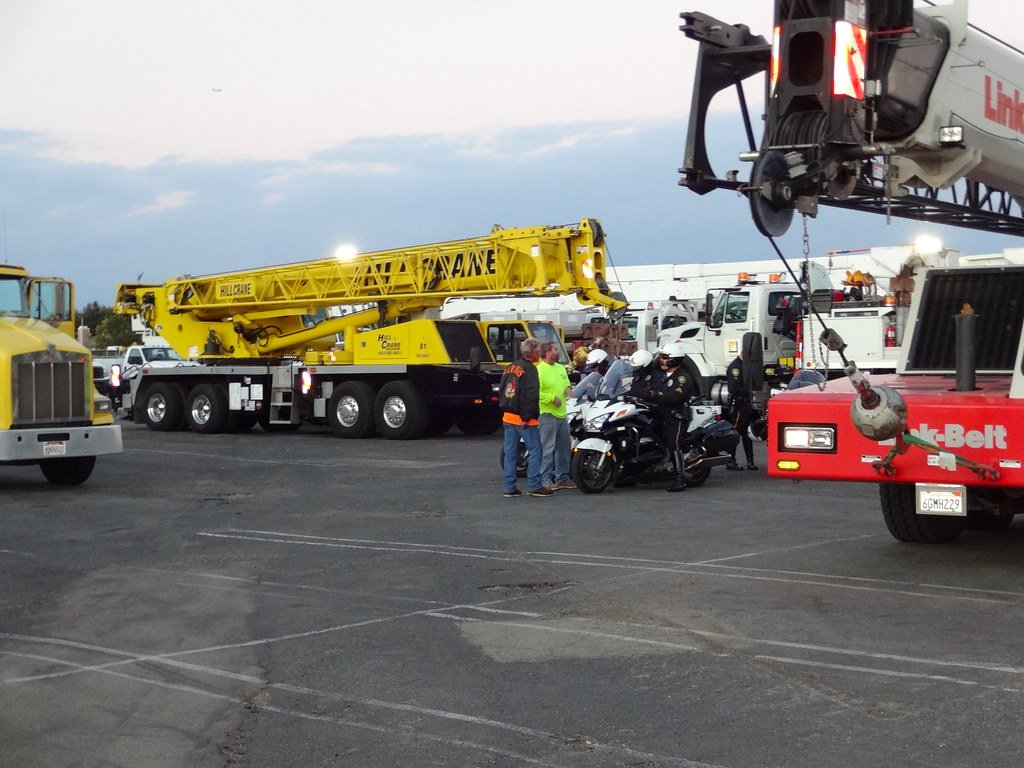Staging heavy equipment on or near roads is common in construction and infrastructure projects. However, without careful planning, it can disrupt traffic flow, cause delays, and increase risks for drivers and pedestrians. At Safety Network Inc., we provide effective traffic control strategies to manage equipment staging and keep traffic moving smoothly. In this article, we will discuss how to stage heavy equipment while maintaining safety and reducing traffic disruptions.

1. Why Staging Heavy Equipment Requires Attention
Staging heavy equipment in active work zones poses unique challenges. Large machines often block lanes, create bottlenecks, or force detours. These disruptions can confuse drivers, cause traffic jams, and increase the risk of accidents.
- Why It Matters: Unplanned staging can delay your project and affect drivers’ safety.
- How It Helps: By managing staging properly, you ensure smoother traffic flow and reduce the chances of accidents.
2. Planning for Effective Equipment Staging
Proper planning is the key to preventing traffic disruptions during equipment staging. Here are the essential strategies for handling this challenge effectively:
1. Choose the Right Location
Start by assessing the available space. Stage equipment in areas that minimize lane blockages and leave enough room for vehicle movement. Make sure the staging area is accessible for both the equipment and traffic.
- Why It Matters: Choosing a poor location can obstruct lanes, causing delays and safety hazards.
- How It Helps: Planning ahead ensures that vehicles can pass safely while your equipment stays in place.
2. Use Clear Signage and Barriers
Set up clear, visible signage to inform drivers of any lane closures or detours. Barriers and traffic cones help direct traffic away from the equipment area, ensuring that drivers know exactly where to go.
- Why It Matters: Without proper signage, drivers may become confused or make sudden, unsafe maneuvers.
- How It Helps: Proper signage guides drivers safely through the work zone, preventing accidents.
3. Effective Communication with Drivers and Workers
Clear communication is essential to avoid accidents and confusion during the staging process. Flaggers, spotters, and construction workers must be in constant contact with one another and the drivers to direct traffic and manage equipment movements.
1. Flaggers and Spotters
Deploy flaggers to direct traffic and spotters to guide equipment operators. Both play a crucial role in ensuring safe operations within the work zone.
- Why It Matters: Flaggers and spotters help prevent accidents caused by blind spots or miscommunication.
- How It Helps: They ensure smooth traffic flow and provide clear instructions, minimizing delays and safety risks.
2. Communication Tools
Make sure your workers have access to radios or other communication devices to coordinate with drivers and other team members. This coordination helps avoid missteps and ensures everything runs smoothly.
- Why It Matters: Without effective communication, the risk of confusion increases, which can lead to accidents.
- How It Helps: Timely communication allows workers to react quickly and safely to any changes in the traffic flow or work zone setup.
4. Timing: Staging During Off-Peak Hours
The timing of staging is crucial for reducing traffic disruptions. Whenever possible, plan to stage heavy equipment during off-peak hours when traffic is lighter.
- Why It Matters: During peak hours, traffic congestion can make it harder to manage lane closures or detours effectively.
- How It Helps: Staging equipment during off-peak hours minimizes disruptions, allowing smoother traffic flow and quicker transitions.
5. Implement Smart Traffic Management Systems
Technological solutions can optimize traffic flow and reduce congestion when staging heavy equipment. Modern traffic management systems monitor real-time traffic data and adjust signals, detours, and signage accordingly.
1. Smart Traffic Signals
Smart signals automatically adjust based on traffic patterns. These systems can help prioritize lanes or reroute traffic away from equipment areas in real-time.
- Why It Matters: Standard traffic systems may not respond fast enough to sudden changes caused by work zones.
- How It Helps: Smart signals help manage traffic efficiently, minimizing delays and congestion around staging areas.
2. Real-Time Monitoring
Use real-time traffic monitoring to keep an eye on traffic flow and make quick adjustments when needed. This helps in addressing issues as they arise and provides insights into how well your staging setup is working.
- Why It Matters: Real-time monitoring helps you stay on top of traffic conditions and act before problems escalate.
- How It Helps: Monitoring helps manage and adjust traffic flows instantly, preventing bottlenecks and keeping traffic moving smoothly.
6. Safety Network Inc.’s Expert Approach to Traffic Control
At Safety Network Inc., we specialize in designing tailored traffic control plans for staging heavy equipment. Our experts assess your project’s needs, implement smart traffic management strategies, and ensure that staging is done efficiently and safely. Here’s how we can help:
- Customized Plans: We design traffic control plans that fit your project’s unique requirements, ensuring safety and efficiency.
- Expert Equipment: We use the best signage, barriers, and smart technology to keep traffic moving while equipment is staged.
- Comprehensive Services: From planning to execution, we offer full-service solutions to ensure your project proceeds without traffic disruptions.
- Why It Matters: A tailored approach ensures that your specific needs are met and that you follow all traffic safety regulations.
- How It Helps: Partnering with Safety Network Inc. gives you the confidence that your traffic management needs will be handled professionally, ensuring smooth operations.
Conclusion
Staging heavy equipment doesn’t have to disrupt traffic flow. With effective planning, clear communication, and the right equipment, you can ensure smooth traffic movement even during complex construction projects. Safety Network Inc. provides expert traffic control services to manage equipment staging and ensure the safety of workers and drivers. Let us help you keep your project on track while maintaining efficient traffic flow.
Contact Us
For traffic control solutions and expert management of heavy equipment staging, contact Safety Network Inc.:
- Phone: Call (559) 291-8000
- Email: help@safetynetworkinc.com
- Website: safetynetworkinc.com

